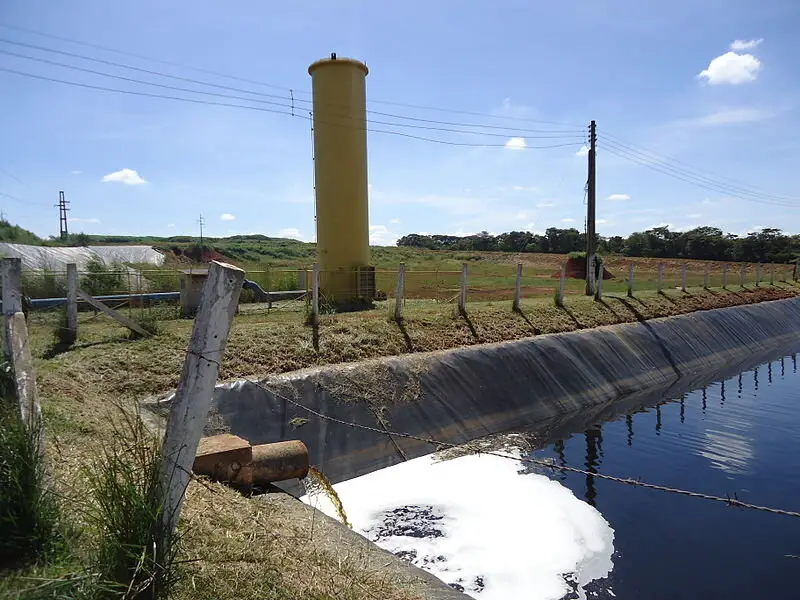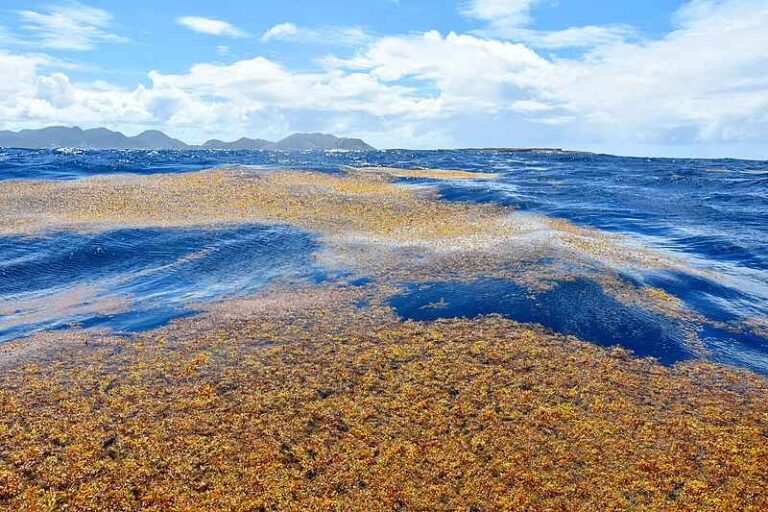Thermal Pollution Definition, Causes, Effects and Control Measures
Thermal pollution of water is a deteriorative process of unsustainable and unnatural temperature change. This article discusses thermal pollution definition, causes, effects and control measures, as outlined below;
-Thermal Pollution Definition: 6 Ways to Define Thermal Pollution
-Thermal Pollution Causes, Effects and Control Measures
Thermal Pollution Definition: 6 Ways to Define Thermal Pollution
Thermal pollution or 'thermal enrichment' is a type of environmental pollution that involves drastic change in temperature conditions of a given medium or environment, along with undesirable physicochemical alteration and global warming [1].
As acknowledged above, it is called 'pollution' because the temperature change tends to influence both biotic and abiotic components of affected ecosystems, and often in a negative manner.
It is fairly common for thermal pollution to occur in aquatic ecosystems including marine zones like oceans, and freshwater biomes like lakes and ponds. As a result, the clause; thermal pollution of water is also fairly common, and accurate in most cases.
The tendency of thermal pollution to occur in aquatic ecosystems can be attributed to the fact that water has both fluidity and high thermal conductivity; both of which allow heat to be propagated rapidly across a large area.
A good alternative way to outline the thermal pollution definition could include some examples of thermal pollution; to help the reader better visualize how this type of pollution occurs; as well as its difference from other forms of environmental degradation like air, water and land pollutions respectively.
Some of these examples are listed in the alternative thermal pollution definition below;
Thermal pollution is any act or process whereby a medium loses its purity and quality alongside, and (partly or entirely) due to the sudden elevation or reduction of its temperature. Examples of thermal pollution are; heat-induced dissolved oxygen depletion, aquatic population decline in nuclear power plant vicinity, combined sedimentary and thermal water pollution by stormwater runoff from urban areas, deforestation-induced solar exposure and overheating of water bodies, and localized thermal changes around water-immersed turbines of hydropower plants.
Like any environmental issue, it is very important to outline the causes of thermal pollution; in order to determine the best methods for its prevention or remediation. Below is an alternative thermal pollution definition that lists some of these causes;
Thermal pollution is a change in environmental quality and safety, as a result of changes in ambient temperature; which is caused by natural and manmade factors like; deforestation, soil erosion, urban stormwater runoff, geothermal fluid dynamics and unsustainable industrial discharge.

The ecologic relevance of thermal pollution can be determines through an assessment of its environmental impacts. In general, effects of thermal pollution revolve mostly around the immediate environment where degradation has taken place, although they subsequently affect the economy and society. The alternative thermal pollution definition below lists some of these effects;
Thermal pollution is an alteration of natural temperature conditions in a given (usually aquatic) medium, with various effects including; dissolved oxygen (DO) depletion, biodiversity loss, carbon and oxygen cycle alterations, toxin concentration-increase, metabolic and adaptive changes (including reproductive and migratory).
Next, the thermal pollution definition is outlined with sources of thermal pollution as a central theme.
Contrary to the causes of thermal pollution which are a defined by their active role in inducing temperature changes (directly or indirectly), the sourced of thermal pollution are defined by their role as hosts to the causes of thermal pollution. This can be understood by comparing the sources listed below to the causes listed earlier in the article;
Thermal pollution is a notable and detrimental change in temperature of a given medium, which is derived from sources like; solar radiation, power plants, industrial manufacturing facilities, refineries, and stormwater management systems.
Lastly, some solutions to thermal pollution challenges are listed in the thermal pollution definition, as follows;
Thermal pollution is a form of environmental degradation caused (or accompanied) by rapid and unnatural changes in ambient temperature. Its potential solutions include; pre-discharge cooling (using cooling towers, ponds), wastewater recycling, afforestation/reforestation, cogeneration, and water remediation.
Thermal Pollution Causes, Effects and Control Measures
Thermal pollution causes are;
1). Deforestation
2). Soil Erosion
3). Urban Stormwater Runoff
4). Geothermal Fluid Dynamics
5). Unsustainable Industrial Discharge
Thermal pollution impacts (effects) are;
1). Dissolved Oxygen (DO) depletion
2). Biodiversity Loss
3). Carbon and Oxygen Cycle Alterations
4). Toxin Concentration-Increase
5). Metabolic and Adaptive Changes (reproductive, migratory)
Applicable measures for the control of thermal pollution are;
1). Use of Artificial Reservoirs (as an Applicable Measure for Control of Thermal Pollution)
The construction of artificial reservoirs can help in controlling thermal pollution.
This is because such reservoirs act as alternative discharge destinations to natural water bodies, for the collection of wastewater.
Artificial reservoirs may be referred to using various terms like; artificial lakes and ponds.
Water that is collected using these reservoirs may then be treated and/or cooled before being discharged into the natural ecosystem.
The use of artificial reservoirs is effective for protecting not only surface water bodies; but also groundwater.
2). Cooling Towers
Cooling towers reduce thermal pollution by serving as an outlet for heat from wastewater to the atmosphere.
Because of the action of wind and the high mobility of atmospheric gases (relative to water), thermal energy tends to dissipate more rapidly with minimal environmental impact.
Cooling towers are fairly common in large-scale electricity generation facilities like coal power plants [2], where they help to eject immense magnitude of waste energy in the form of heat.
It must be noted that waste-energy recovery is a possible alternative to the use of cooling towers, and a more sustainable one in most cases. The waste heat can be used for cogeneration instead of being discarded.
One of the only environmental concerns associated with cooling towers is the tendency of greenhouse gas emission; especially in the form of water vapor that escapes from the cooling fluid along with heat [3].

3). Recycling of Process Water (as an Applicable Measure for Control of Thermal Pollution)
Heated wastewater from industrial processes can be recycled to prevent its disposal into natural ecologic media.
Such recycling may include measures for removing sediments, soluble contaminants, as well as excessive heat.
Recycling to control thermal pollution is a highly recommendable measure because it also reduces resource depletion risks that accompany the disposal of wastewater, especially in areas where water resources are not surplus.
Conclusion
Thermal pollution can be defined as the degradation of ecological media due to unnatural and unsustainable changes in temperature, which may be caused by natural and manmade factors.
Thermal pollution causes are; deforestation, soil erosion, urban stormwater runoff, geothermal fluid dynamics, and unsustainable industrial discharge.
Thermal pollution impacts (effects) are; dissolved oxygen depletion, biodiversity loss, carbon and oxygen cycle alterations, toxin concentration-increase, metabolic and adaptive changes.
Applicable measures for the control of thermal pollution are;
1. Use of Artificial Reservoirs
2. Cooling Towers
3. Recycling of Process Water
References
1). Bo, N. (2003). "Thermal pollution causes global warming" Global and Planetary Change. Available at: https://doi.org/10.1016/S0921-8181(03)00113-9. (Accessed 16 May 2023).
2). Lakovic, M.; Lakovic, S.V.; Baniac, M. (2012). "Analysis of the evaporative towers cooling system of a coal-fired power plant." Thermal Science 16(suppl. 2):S375-S385. Available at: https://doi.org/10.2298/TSCI120426176L. (Accessed 16 May 2023).
3). Sherwood, S. C.; Dixit, V.; Salomez, C. (2018). "The global warming potential of near-surface emitted water vapour." IOP Publishing, Environmental Research Letters 13(10). Available at: https://doi.org/10.1088/1748-9326/aae018. (Accessed 16 May 2023).




